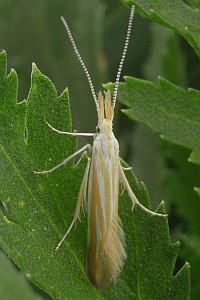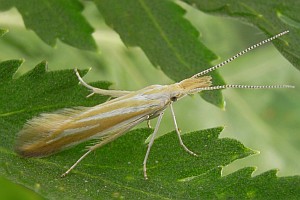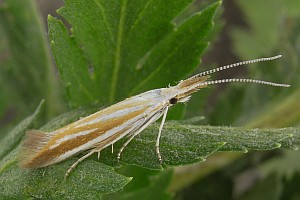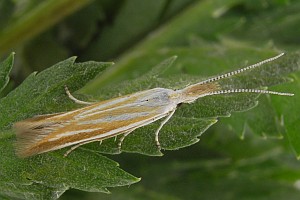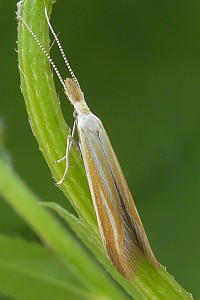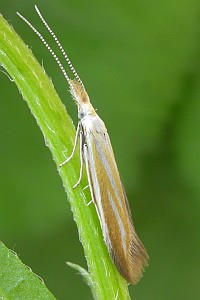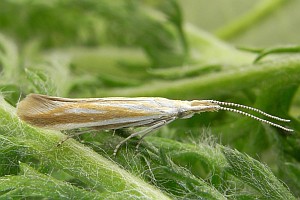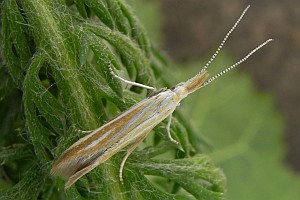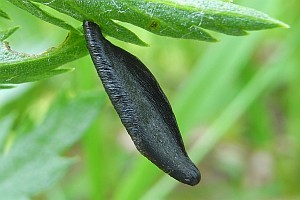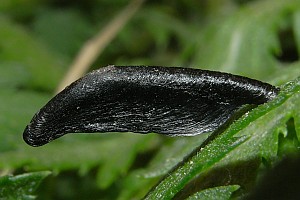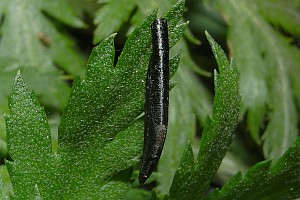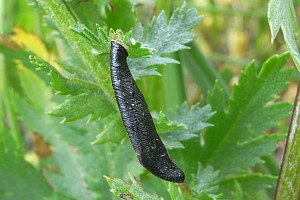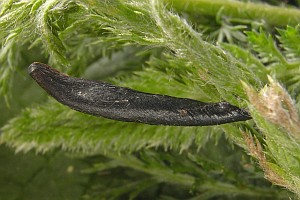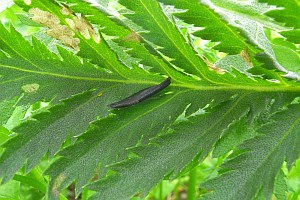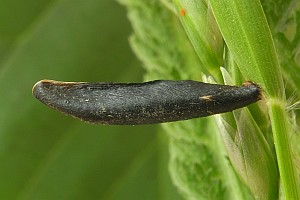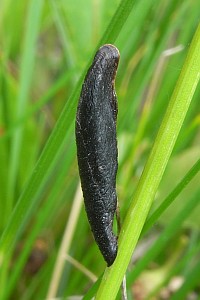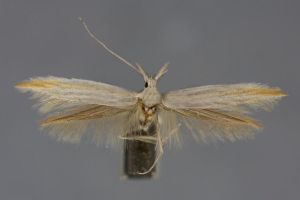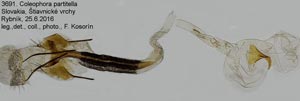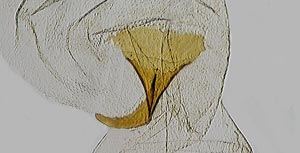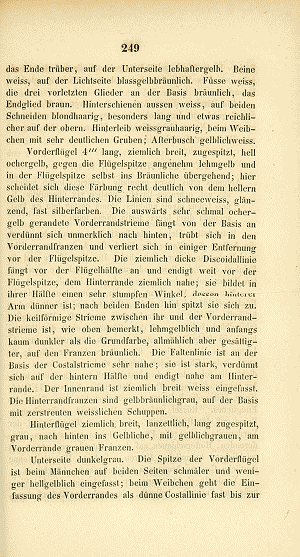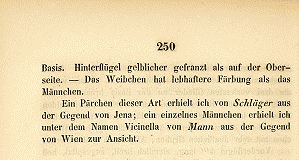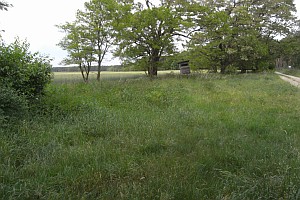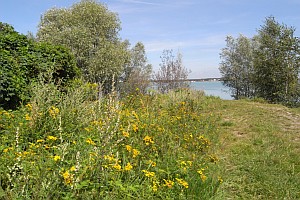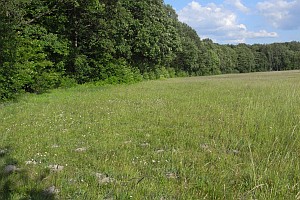

 +20Kontinente:EUAS
+20Kontinente:EUAS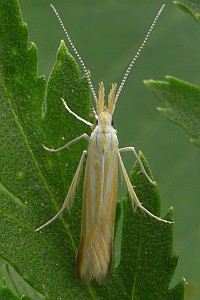
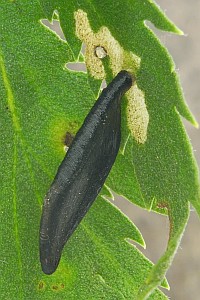
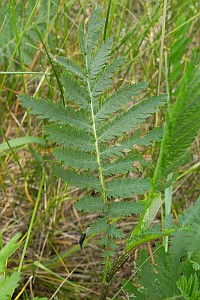
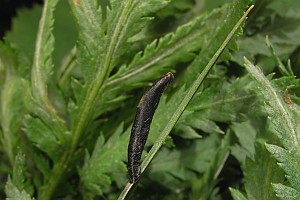
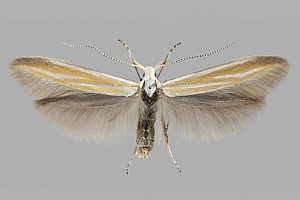
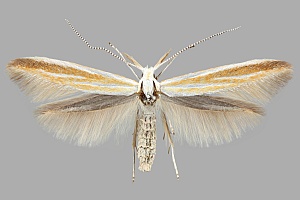
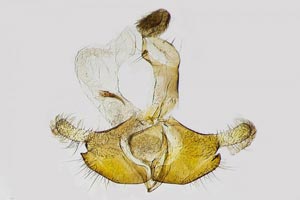
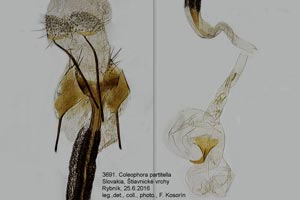
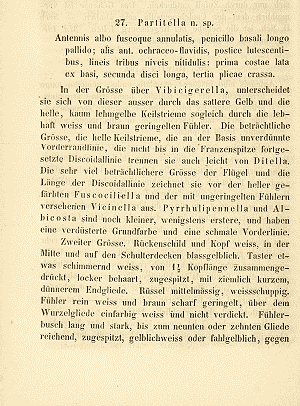
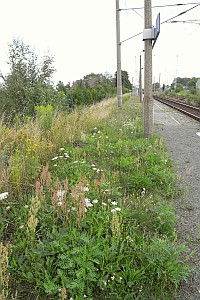
1. Lebendfotos
1.1. Falter
1.2. Raupe, Raupensack
1.3. Fraßspuren und Befallsbild
1.4. Verpuppung
2. Diagnose
2.1. Männchen
2.2. Weibchen
Hinweis: Ein hier gezeigtes Foto wurde am 27.11.24 zu Coleophora ditella verschoben: [Bestimmungskorrektur]
2.3. Genitalien
2.3.1. Männchen
2.3.2. Weibchen
Hinweis: Ein hier gezeigtes Foto wurde am 27.11.24 zu Coleophora ditella verschoben: [Bestimmungskorrektur]
2.4. Erstbeschreibung
3. Biologie
3.1. Habitat
3.2. Nahrung der Raupe
- [Asteraceae:] Achillea millefolium (Gewöhnliche Schafgarbe)
- [Asteraceae:] Achillea tenuifolia [Резник (1989)]
- [Asteraceae:] Tanacetum vulgare [= Chrysanthemum vulgare]
- [Asteraceae:] Leucanthemum vulgare agg. [= Chrysanthemum leucanthemum] (Margerite)
- [Asteraceae:] Artemisia absinthium [= Artemisia absynthium] (Wermutkraut, Echter Wermut)
- [Asteraceae:] Artemisia alba (Kempfer-Wermut)
- [Asteraceae:] Centaurea stoebe ??? [= Centaurea paniculata ???] (Rispen-Flockenblume ???)
- [Asteraceae:] Centaurea sp. ???
Heidrun Melzer fand die Raupen in Sachsen an Rainfarn (Tanacetum vulgare), Schafgarbe (Achillea millefolium) und Margerite (Chrysanthemum leucanthemum). Weitere in der Literatur genannte Nahrungspflanzen sind Artemisia absinthium und A. alba.
Baldizzone (2019: 271) nennt auch "Centaurea spp.". [Bladmineerders.nl (abgefragt 30. Juli 2022)] kommentiert das: "A reference by Vávra to Centaurea stoebe seems dubious". Vávra (2016: 123) hatte konkret formuliert: "Velmi vzácný a lokální stepní druh žijící v suchých trávnících na různých složnokvětých bylinách, zde na chrpě latnaté (Centaurea stoebe). Ta vytváří řídké porosty na drolinách – zvětralinách břidlic a vyvřelých hornin, kterých je na svazích rezervace mnoho. Byl nalezen jediný vak na živné rostlině dne 15. 6. 2002, imágo se nevylíhlo. Nedoloženo sbírkovým materiálem." Es wurde also nur ein einzelner Raupensack gefunden, und der Falter schlüpfte nicht. Man darf also getrost von einer Fehlbestimmung ausgehen.
(Autor: Erwin Rennwald, mit Ergänzung von Jürgen Rodeland)
4. Weitere Informationen
4.1. Andere Kombinationen
- Multicoloria partitella (Zeller, 1849) [so bei Anikin et al. (2017)]
4.2. Synonyme
- Ischnophanes davidii Nemeş, 2003 [synonymisiert durch Baldizzone (2005)]
4.3. Typenmaterial
Baldizzone (1994: 128) designierte einen Lectotypus: “Lectotypus ♀ [designato in questa sede] conservato al BMNH, reca le seguenti etichette: 1) “LECTOTYPE” (a stampa, rotondo, orlato di blu), 2) “Partitella Z. Jena.”, 3) “Zeller Coll. Walsingham Collection. 1910-427” (a stampa), 4) “B.M. ♀ Genitalia slide No. 3728” (a mano e stampa).”
4.4. Literatur
- Anikin, V.V., Sachkov, S.A. & V.V. Zolotuhin (2017): "Fauna lepidopterologica Volgo-Uralensis": from P. Pallas to present days. — Proceedings of the Museum Witt Munich, Volume 7: 1-696; Munich and Vilnius.
- Lectotypus-Festlegung: Baldizzone, G. (1994): Contribuzioni alla conoscenza dei Coleophoridae LXXV. Coleophoridae dell'Area Irano-Anatolica e regioni limitrofe (Lepidoptera). — Associazione Naturalistica Piemontese Memorie 3: 1-423. Stenstrup (Apollo Books).
- Baldizzone, G. (2005): Contribuzioni alla conoscenza dei Coleophoridae. CX. Alcune note sui Coleophoridae descritti da Ioan Nemeş negli anni 2003 e 2004 (Lepidoptera: Coleophoridae). — SHILAP Revista de Lepidopterología, 33 (130): 123-130. [PDF auf redalyc.org]
- Резник, С. Я. (1989): Новые малоизвестные виды чеслоносок рода Multicoloria Căp. (Lepidoptera, Coleophoridae) аридных зон СССР. — Труды Зоологического института Академия наук СССР 200: 33-39.
- Richter, I. & G. Pastorális (2015): New findings of case-bearing moth species of Goniodoma and Coleophora genera from the Balkans (Lepidoptera: Coleophoridae). — Microlepidoptera.hu 8: 29-42. [PDF auf epa.oszk.hu]
- Vávra, J. (2016): Motýli (Lepidoptera) přírodní rezervace Máslovická stráň - Butterflies and moths (Lepidoptera) of the Máslovická stráň Nature Reserve (Central Bohemia). — Muzeum a současnost, Roztoky, ser. natur., 28: 112–166. [PDF auf clvaw-cdnwnd.com]
- Wullaert, S. (2024): Resultaten van de Werkgroep Bladmineerders uit 2021 en 2022 met meldingen van 16 nieuwe soorten voor de Belgische fauna (Alucitidae, Blastobasidae, Coleophoridae, Crambidae, Depressariidae, Elachistidae, Nepticulidae, Notodontidae, Psychidae, Pyralidae en Tineidae). — Phegea 52 (1): 4-28.
- Erstbeschreibung: Zeller, P. C. (1849): Beitrag zur Kenntniss der Coleophoren. — Linnaea Entomologica. Zeitschrift herausgegeben von dem entomologischen Vereine in Stettin 4: 191-416. Berlin (E. S. Mittler und Sohn).



















